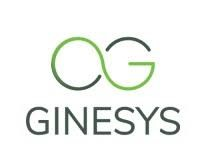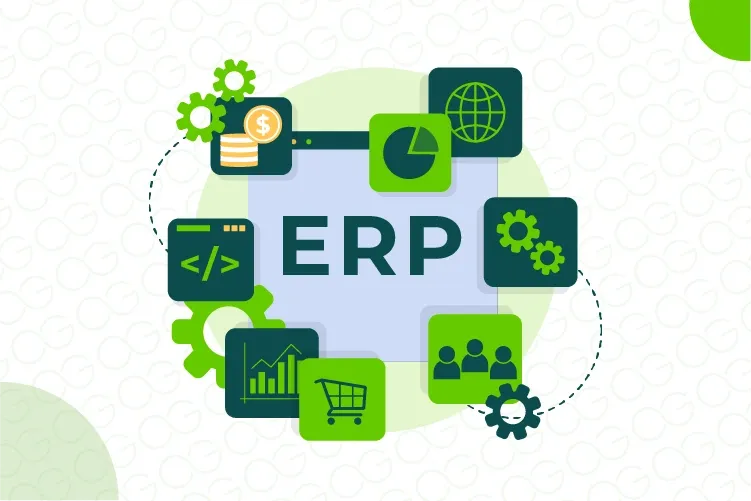How and When to Migrate from VasyERP to Ginesys ERP?
Retail today isn’t just about selling—it’s about syncing. Products, people, payments, and platforms all need to move in harmony. And behind that rhythm is the ERP system, quietly making or breaking the retail operation.
But what happens when the ERP starts falling behind? When the sales team complains about laggy reports, or the inventory system keeps misfiring, or you’re patching bugs more often than you're analyzing performance?
Many retailers start with a system like VasyERP—affordable, functional, and good enough for a single store. But as operations grow and complexity kicks in, cracks appear. That’s when names like Ginesys ERP start showing up in boardroom conversations.
So, the million-dollar question is: Is it time to migrate? And, if yes, how do you do it without disrupting your business?
In this blog, we're unpacking:
- Why do retailers outgrow VasyERP?
- When is the correct time to switch to Ginesys ERP?
- And how can Ginesys ERP set your business up for scalable and smarter growth
Let's get into it!

Ready to upgrade your ERP? Sync smarter with Ginesys today
Why Migrate from VasyERP?
Imagine this: You’ve opened your third retail outlet. Weekend traffic is brisk, online orders are pouring in, and your marketing team is finally aligned. But your ERP? It’s trying to keep up with what it was never built to do.
Here's where VasyERP starts to hold you back:
- Scalability Issues: VasyERP might be ideal for one or two shops. But try to manage five stores, each with their own inventory, promotions, and staff, and you'll see the system start to groan.
- Feature Limitations: Want to sell on Amazon or Shopify? Need more advanced warehouse tracking or automated purchase orders? If VasyERP doesn’t offer these, you will have to utilize a number of tools that don’t integrate well with one another.
- Performance Bottlenecks: Slow load times, endless reports to generate, and peak-hour crashes. When your ERP doesn’t respond when you need it most, it becomes a revenue risk.
- Compliance and Security: GST compliance is non-negotiable in India. If the ERP is not upgraded or lacks automated filing support, you are playing with fire. Add data security to that, and the gaps widen.
- Customization and Flexibility: Retail is not a one-size-fits-all proposition. If you're stuck with rigid workflows and can't tailor the system to your business, you'll be fitting your business to the software—not the other way around.
- Inadequate Support: If your POS freezes during Diwali sales and you can't get anyone on the phone to fix it—that's a problem. ERP support needs to be like a safety net, not a lottery.
When is the Right Time to Migrate to Ginesys ERP?
Migrating ERP systems is not something you wake up and decide on one morning. But there are signs that make the decision clear:
- You're Battling Inefficiencies Every Week: Is stock reconciliation eating up hours? Are you exporting CSVs just to do basic sales analysis? If everyday tasks feel like uphill battles, it’s time to move on.
- Your Business is Expanding: Maybe you’re going from two stores to ten. Or adding an online store to your physical presence. Either way, growth needs infrastructure that can keep up—not drag you down.
- You're Moving Toward Omnichannel Retailing: Offline, online, marketplaces, social commerce—retail is everywhere now. Ginesys ERP helps unify sales across all channels so you can offer a seamless customer experience while managing everything from a single source of truth.
- You're Seeing Data Inconsistencies: Does your finance data never quite match your inventory reports? Are your sales numbers off between the POS and your dashboards? These mismatches can be deadly during audits and forecasting.
- Your Operational Costs are Creeping Up: If you’re spending more time and money fixing or working around your ERP than benefiting from it, then it’s no longer delivering real ROI.
You Need Deeper Analytics.: Running a business today means making fast, data-backed decisions. Ginesys brings in AI-powered insights, not just dashboards.

How to Plan the Migration from VasyERP to Ginesys ERP?
So, you’ve decided it’s time to upgrade. But ERP system migration isn’t a data dump, or just a software install—it’s a business transformation. Done right, it puts your retail operations on a scalable, future-ready trajectory. Done wrong, and it causes chaos across billing counters, warehouses, and dashboards.
Here’s how you can make a smooth, strategic, and seamless transition from VasyERP to Ginesys ERP.
Step 1: Define Migration Goals
Before anything else, get crystal clear on the why. What’s not working in VasyERP? What are you hoping Ginesys will fix or improve? Maybe you're tired of manual stock adjustments. Maybe your team’s juggling separate tools for online and offline sales. Whatever it is, define your migration goals.
Ask yourself:
- What are the top three pain points we face daily?
- What processes must be faster, more accurate, or automated?
- What metrics will prove migration was worth it?
This clarity becomes your north star throughout the transition.
Step 2: Data Backup and Cleaning
Think of your ERP data as your retail DNA. Back it up—securely. And while you're at it, clean the house. You don’t want to migrate junk data into a clean system. This is the perfect time to:
- Eliminate duplicate SKUs
- Remove inactive vendors or customers
- Archive old purchase orders
It’s like moving homes—you pack only what you need, not the forgotten or broken appliances from ages ago.
Step 3: Choosing the Right Implementation Partner
ERP migration isn't a DIY YouTube project. Ginesys offers dedicated implementation support and certified partners who know the ropes.
Why it matters:
- The experts of Ginesys are aware of the architecture of VasyERP and Ginesys.
- We’ll tailor the setup according to your business type—lifestyle retailing, electronics, or apparel.
- We'll point out things you never even thought of, like tax configuration or barcode issues.

From chaos to control—migrate to Ginesys ERP
Step 4: Data Migration Strategy
This stage involves detailed system mapping to ensure a smooth transition. Begin by aligning the following data points between VasyERP and Ginesys ERP:
- Products (item masters, SKUs, categories)
- User roles and permissions
- Customer and vendor data
- Financial records (invoices, ledgers, tax details)
Use automation tools wherever possible but always double-check the results.
Pro tip: Conduct side-by-side data comparisons for several days post-migration. If VasyERP is showing 245 units in inventory of Product X, and Ginesys is showing 198—that’s a red flag you’ll want to resolve prior to go-live.
Step 5: Training and Change Management
You can possess the best ERP system in the world, but if your people don’t know how to use it then it’s a wasted effort.
Organize role-based training sessions:
- The cashiers require training on point-of-sale operations.
- Store managers need to know about inventory management and reporting functions.
- Finance teams require guidance on billing processes, tax compliance, and reconciliation tools.
Most importantly, anticipate some resistance to change—it's a natural part of any transition. Focus on good onboarding, making this process less overwhelming.
Step 6: Testing and Go-Live
Start pilot testing at a single store or department store. See how real-time transactions go. Watch out for:
- Speed of billing
- Accuracy of inventory updates
- Real-time synchronization of offline and online orders
Resolve any system issues promptly and validate all workflows thoroughly. Once the system performs reliably, set a go-live date—preferably mid-month and outside of peak sales periods.
Continue supporting your team after launch with structured post-migration assistance, including a rapid-response plan to address any issues during the initial 30 days.

Key Benefits of Migrating to Ginesys ERP
Switching to a new ERP system is a big decision—but it's not just about solving today’s problems. It’s about setting your retail business up for what’s next. Ginesys ERP is a powerful and smart engine, built to handle complexity without adding chaos.
Here’s what you gain when you make the move:
- Unified Retail Management: Imagine managing POS, inventory, online orders, supply chain, and CRM—all in one system. With Ginesys, there’s no more hopping between tools or exporting spreadsheets just to see what’s happening. Everything’s connected and everything talks to each other.
- Enhanced Inventory and Stock Management: No more guesswork, no more “we thought we had it in stock.” Ginesys gives you real-time visibility across your entire network—stores, warehouses, ecommerce, and even returns. That means fewer stockouts, fewer overstock scenarios, and better replenishment planning.
- Omnichannel Capabilities: Modern retail doesn’t live in one place. Your customer might browse online, buy in-store, and return via an app. Ginesys bridges these touchpoints with seamless omnichannel integration—so sales, fulfillment, and customer data stay in sync.
- Advanced Analytics and Reporting: Ginesys offers AI-powered analytics that go beyond historical reporting. You get predictive insights—like which SKUs are trending, which store is underperforming, or what discounts are killing your margins. Custom dashboards mean you see what you need to see, not generic metrics.
- Improved GST Compliance & Financial Management: With built-in GST compliance, automated tax calculations, audit-ready logs, and live financial reports, your finance team can stop chasing numbers and start managing strategy. Plus, you reduce the risk of non-compliance penalties—a hidden cost many retailers don’t realize until it’s too late.
- Better Customer Experience: When systems are slow, clunky, or disconnected, your customers feel it. Ginesys enables lightning-fast billing at POS, integrated loyalty programs and personalized offers based on purchase history.
- Scalable & Future-Ready ERP: Whether you’re operating five stores or fifty, Ginesys scales with you. Open a new outlet? Expand to new regions? Launch a D2C website? Ginesys doesn’t just keep up—it anticipates and supports that growth with features you won’t outgrow anytime soon.
- Robust Support and Continuous Updates: You’re supported every step of the way. Ginesys offers onboarding, post-migration support, regular updates, and access to a strong user community. It stays current with retail trends, regulations, and technology—so your business never falls behind.
Common Challenges in Migration and How to Overcome Them
Even with the right ERP on the horizon, the journey from VasyERP to Ginesys ERP isn’t without a few bumps. But here’s the good news: every challenge is predictable—and preventable with the right approach.
Let’s break down what can go wrong, and how to stay ahead of it.
Data Migration Errors
Migrating large volumes of data—inventory, customer info, transaction history—is tricky. Errors here can create operational chaos later.
How to handle it:
- Conduct thorough data audits before migration
- Clean and validate records in advance
- Use test migrations to spot mismatches or anomalies
- Post-migration, run reports to verify everything aligns
Employee Resistance
Let’s face it—people resist change. Especially when they’re comfortable with the old system, even if it's flawed.
How to handle it:
- Involve key team members early in the migration planning
- Highlight how Ginesys makes their day-to-day easier (faster POS, fewer manual tasks)
- Offer role-based training, not one-size-fits-all demos
- Provide support in the initial weeks post-launch
Integration Issues
Your ERP doesn’t operate in a vacuum. It connects to your ecommerce platforms, payment gateways, CRM tools, and more. A glitch here can break key processes.
How to handle it:
- Map out all integrations beforehand
- Work closely with Ginesys implementation experts
- Test all plug-ins and connections in a sandbox environment
- Fix incompatibilities before you go live
Downtime Concerns
The fear of operational disruption can cause businesses to delay migration—sometimes indefinitely.
How to handle it:
- Migrate in phases—not everything at once
- Choose off-peak periods for go-live
- Keep a fallback plan ready, just in case
- Run parallel systems briefly if needed to ensure continuity
When done right, your migration won’t feel like a crash landing. It’ll be more like switching lanes—with better speed ahead.

Future-proof your retail with Ginesys ERP.
Final Thoughts
Switching from VasyERP to Ginesys ERP isn’t just a technology upgrade—it’s a strategic move toward smarter retail. Today’s retailers demand speed, visibility, omnichannel agility, and actionable insights. Ginesys brings it all together in one unified platform, purpose-built for the complexities of modern retail.
Ready to see it in action? Schedule a personalized demo with a Ginesys consultant today.

